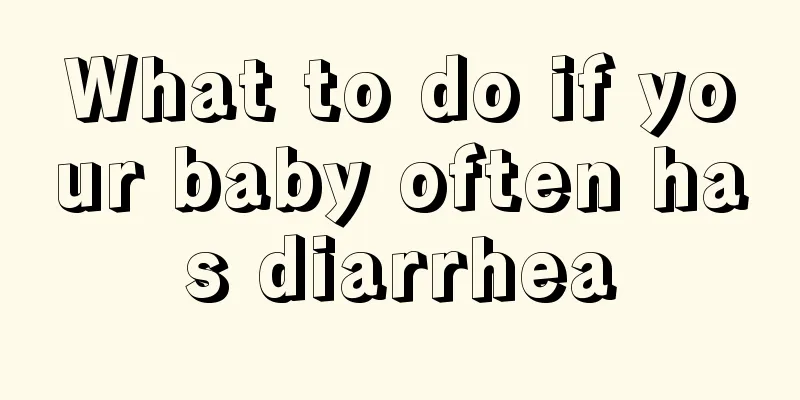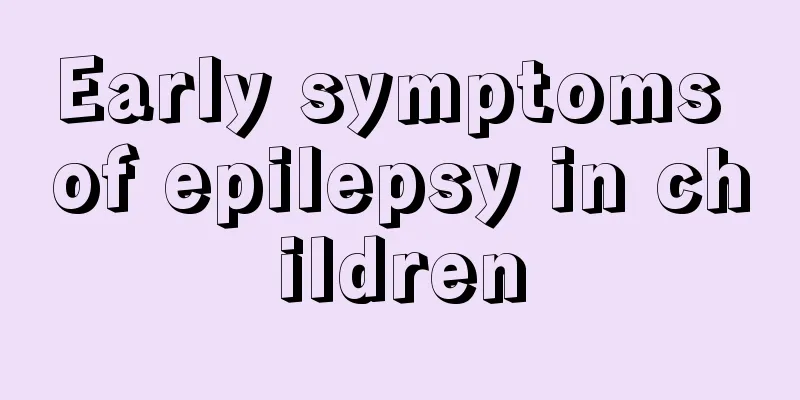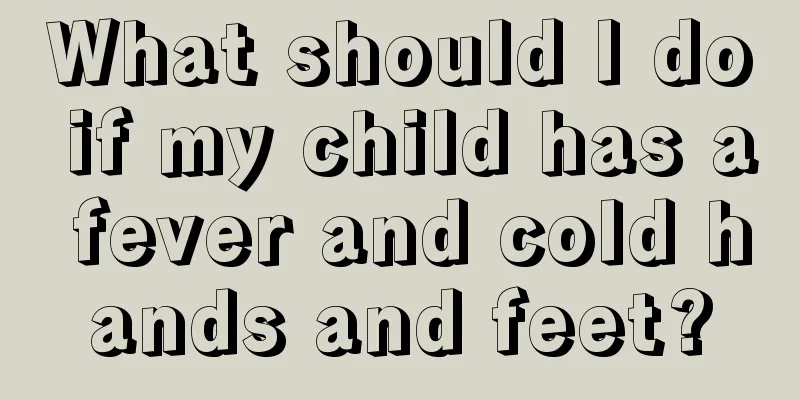What to do if the child is scratched and broken

|
Babies are particularly prone to trauma when they are young, especially when they are just starting to learn to walk. Bumps and bruises are inevitable. At this time, in order for the baby's wound to heal quickly, mothers should clean the baby in time. When the wound is recovering, the baby may feel itchy and want to scratch it with his hands. Mothers must watch the baby, because scratching is particularly easy to leave scars. So what should children do if they have scratches and broken skin? 1. Abrasions. The most common trauma in children usually only damages the epidermis and the injury is relatively minor, so it can be treated at home. For superficial wounds with small area, iodine or disinfectant alcohol can be applied to the skin edge of the wound, erythromycin ointment can be applied externally, and the wound can be bandaged with clean gauze. If the wound has no signs of redness, swelling, pain or infection, disinfect the wound again after 1-2 days and replace the gauze with clean one. If the abrasion is large, the surface is stained with dirt, sand, etc., or there is obvious tissue fragmentation or abrasions on important parts of the face, go to the hospital as soon as possible after the above simple treatment. 2. Stab wound. If you are stabbed by a nail, needle or piece of glass, the wound will be small and deep, and bacteria and dirt will not be easily discharged. Dirty bamboo and wood pieces and rusty nails may cause tetanus, so you should seek medical attention immediately. Some simple treatments can be done before going to the hospital: If there is no puncture object remaining on the outside of the wound, you can squeeze the wound to let some dirty blood flow out, then apply iodine or disinfectant alcohol, and bandage it with clean gauze. If there is any puncture object on the wound, you can gently remove it with tweezers and then deal with it as above. 3. Contusion and laceration. When a child falls and hits the edge of a table or chair, or is cut on the skin by a sharp object such as a knife or scissors, the wound may be deep, bleed profusely, or affect the nerves and muscles. Especially if the child is cut by dirty, rusty sharp objects or has wounds on the head and face, there is a high probability of infection with tetanus bacteria. At this time, the child should be taken to the hospital for debridement and suture as soon as possible. Before going to the hospital, you can do some simple treatments at home. Apply iodine or disinfectant alcohol to the skin around the wound, then bandage it with clean gauze to stop the bleeding. Do not use ropes or rubber bands to stop the bleeding. If you do this carelessly, it will cause ischemia and necrosis of the extremities. If the skin contusion and laceration is shallow and there is little bleeding, there is no need to go to the hospital after the above treatment. Observe the wound carefully. If there is no redness, swelling, pain or infection signs, disinfect the wound again after 2-3 days and replace the gauze with clean one. 4. Crushing or smashing injuries. After being squeezed by doors or windows or hit by heavy objects, mild injuries may only cause redness, swelling and pain. If there is no skin damage, apply local cold compress and observe. If there is skin damage, treat it as the above-mentioned abrasions. Severe injuries cause severe pain, bruising and cracking of the skin. You should apply ice water to cool the skin and go to the hospital as soon as possible for an X-ray to check for any fractures. 5. Burns and scalds. First, rinse the wound with running cold water for at least 30 minutes to quickly reduce the heat on the skin surface. After fully moistening, carefully remove clothing, keeping the blisters as much as possible. Cover the injured area with a clean cloth. Be careful not to apply toothpaste, soy sauce, etc. on the wound, as these things can easily cause infection. Do not apply colored substances such as mercurochrome or gentian violet as they may affect the judgment of the injury. Except for small skin erythema and mildly painful burns that can be treated by yourself, you should be sent to the hospital as soon as possible for further wound treatment. 6. Being bitten by an animal. After being bitten by an animal such as a cat or dog, first rinse the wound thoroughly. Rinse the wound with clean water, soapy water or iodine for about 20-30 minutes to remove or kill local bacteria. The wound does not need to be bandaged, just go to the hospital immediately for further treatment. For larger, deeper wounds, tetanus antitoxin and rabies vaccine should be administered. |
<<: Dry bloody stool in children
>>: Homemade baby biscuits that melt in your mouth
Recommend
What medicine should children take if their tongue is thick and white?
A person's tongue can reflect whether certain...
How to correct stuttering in children?
When parents encounter the problem of stuttering ...
What to do if your child swallows a coin
Children have no sense of danger. They are just v...
How to train a 3-year-old with poor chewing ability
A child’s physical health is inseparable from his...
What to do if the baby has diarrhea after drinking milk
Everyone knows that the stomach and intestines of...
When is the best time to have hernia surgery in children?
Currently, the best treatment for pediatric herni...
What are the reasons why children do not grow taller?
In real life, children are the treasures of every...
Genetic screening for deafness in newborns
Newborns are their parents’ treasures, so any pro...
Can babies take a bath when they have acute rash?
In life, we must pay attention to the physical he...
What should I do if my baby has a cold, fever and vomiting?
Some babies have vomiting problems due to fever, ...
Is it necessary to test bone density in children?
For some new mothers, they are always caught off ...
Baby wets the bed at night
For newborn babies, their organs are not fully de...
What are the methods to relieve itching of prickly heat in children?
?Every summer is a time when mothers are more ner...
Baby pasta recipes
In life, many mothers will worry about adding com...
What to do if your baby's poop is green
Many babies are born every year. In today's s...









